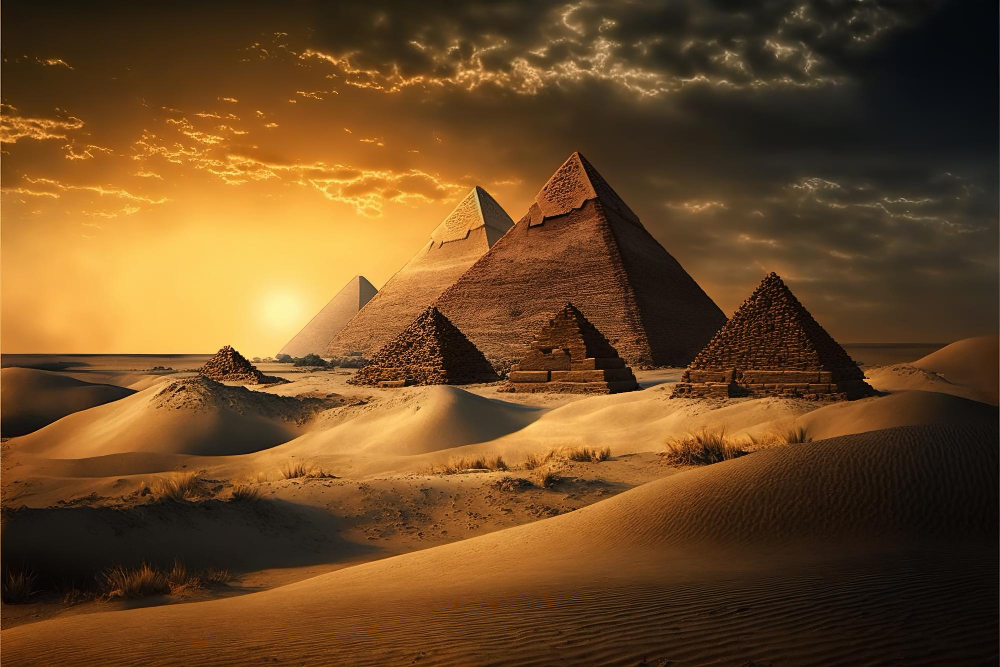Throughout history, humankind has been inspired to create awe-inspiring structures that stand as testaments to human ingenuity and creativity. From the ancient wonders that have captivated civilizations to the modern marvels that showcase cutting-edge technology, the Seven Wonders of the World encompass a diverse array of architectural and engineering achievements. In this article, we explore these wonders, celebrating their cultural significance and enduring legacy.
The Great Pyramid of Giza, Egypt
The only surviving wonder of the ancient world, the Great Pyramid of Giza, is a masterpiece of engineering and architectural precision. Built around 2570 BCE as a tomb for Pharaoh Khufu, the pyramid’s construction remains a marvel, with massive limestone blocks carefully stacked to form an imposing structure that has withstood the test of time.
The Hanging Gardens of Babylon
Often regarded as the most enigmatic of the Seven Wonders, the Hanging Gardens of Babylon were said to be an opulent terraced garden built by King Nebuchadnezzar II in the 6th century BCE. Although no definitive evidence of their existence has been found, the gardens’ beauty and lushness have been immortalized in ancient texts and tales.
The Statue of Zeus at Olympia, Greece
A tribute to the king of the gods, the Statue of Zeus at Olympia was a colossal seated figure sculpted by the renowned Greek sculptor Phidias. The statue, erected in the Temple of Zeus around 435 BCE, was a symbol of power and divinity and stood as an exemplary work of ancient Greek art.
The Temple of Artemis at Ephesus, Turkey
The Temple of Artemis, completed around 550 BCE, was a grand sanctuary dedicated to the goddess Artemis. A marvel of ancient architecture, the temple was adorned with exquisite sculptures and artworks, drawing pilgrims and travelers from far and wide.
The Mausoleum at Halicarnassus, Turkey
Built as a grand tomb for Mausolus, a ruler of Caria, the Mausoleum at Halicarnassus was completed in 353 BCE. This awe-inspiring structure featured intricate sculptures and was considered a significant example of ancient Greek architecture.
The Colossus of Rhodes, Greece
Standing tall at the entrance of the harbor of Rhodes, the Colossus of Rhodes was a colossal bronze statue of the sun god Helios. Built in 280 BCE, the statue was one of the tallest of its time and symbolized the city’s resilience.
The Lighthouse of Alexandria, Egypt
The Lighthouse of Alexandria, constructed around 280 BCE on the island of Pharos, was an ancient marvel of engineering. Its beacon guided sailors safely into the harbor, and the lighthouse stood as a symbol of Alexandria’s importance as a bustling port city.
Modern Marvels: Honoring Human Achievement
While the ancient wonders no longer stand, modern times have given rise to new wonders that pay homage to human creativity and technological advancement. These modern marvels include:
- The Eiffel Tower in Paris, France, a symbol of architectural and engineering innovation.
- The Great Wall of China, a testament to ancient military engineering and defense.
- The Taj Mahal in Agra, India, an exquisite example of Mughal architecture and a symbol of eternal love.
From Past to Present
The Seven Wonders of the World, both ancient and modern, are an enduring testament to human imagination, innovation, and dedication. These awe-inspiring structures have captured the hearts and minds of people across the ages, standing as beacons of human achievement and the quest for beauty and greatness. Whether through the grandeur of the ancient pyramids or the contemporary ingenuity of modern architectural feats, the Seven Wonders of the World continue to inspire and remind us of the remarkable capabilities of humanity.




